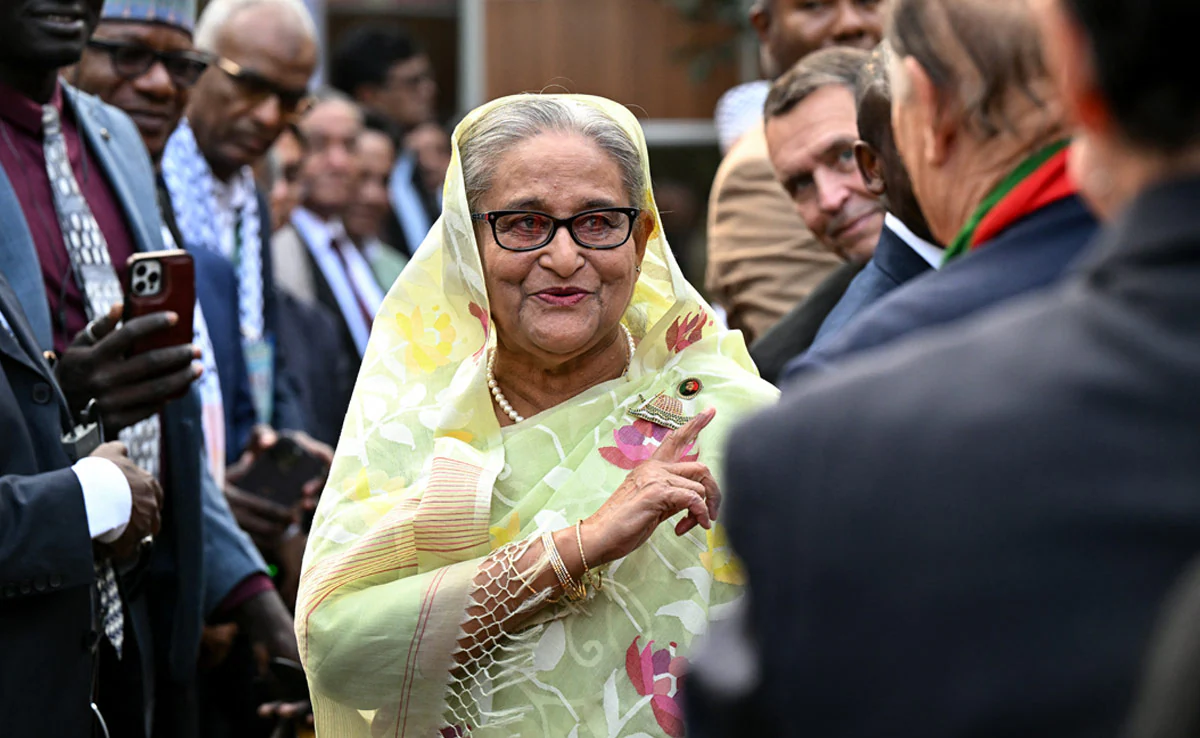Sheikh Hasina’s The report explains what happened in the Prime Minister’s official residence before Sheikh Hasina escaped aboard a military aircraft.

According to a report in the Prothom Alo daily, Sheikh Hasina refused to quit as Bangladesh Prime Minister and ordered security forces to intensify the crackdown on widespread protesters, but security officials indicated the protests could not be handled by force.
The report describes what happened in the Prime Minister’s official residence before her last-minute escape in a military plane, just before hundreds of protesters broke in and went on the rampage.

Sheikh Hasina’s: Morning Meeting With Security Chiefs
According to the Prothom Alo story, the Awami League leader summoned top security and police officials to her home. The death toll was mounting, and some of her advisors tried to persuade her to cede power to the Army.
But the 76-year-old five-time Prime Minister remained determined. She urged the military to strengthen the existing curfew. On the streets, however, things were changing quickly. Despite the curfew, demonstrators began gathering at several locations throughout Dhaka.
During her discussion with security officials, she questioned why they had been unable to control the protestors. She pointed to images of protestors leaping atop police vehicles and questioned why the authorities weren’t cracking down harder. At one point, she reminded them that they had been promoted because she trusted them.
During the discussion, Sheikh Hasina lauded the police reaction to the protestors. However, the police chief stated that the situation is such that they would not be able to contain it for long.

Sheikh Hasina’s: Son convinced Hasina to go.
According to the report, the security forces attempted to explain to her that using greater force is not the solution. However, the seasoned leader did not budge. The officials then spoke with Sheikh Hasina’s sister, Rehana, in another room, urging her to persuade the Prime Minister to resign. Rehana chatted with Hasina, but it didn’t help. At this time, Sheikh Hasina’s son, Sajeeb Wazed Joy, stepped in. Joy, who lives in the United States, spoke with his mother and persuaded her to retire.
Joy told NDTV yesterday that his mother did not want to leave Bangladesh. “She wanted to stay and did not want to leave the nation at all. However, we continued stressing that it was not safe.
This is for her. We were more concerned about her physical safety, so we encouraged her to leave,” he explained.
“I chatted with her this morning. The situation in Bangladesh, as you can see, is chaotic. She is cheerful, yet very disappointed. It’s very disheartening for her because it was her dream to turn Bangladesh into a developed country, and she worked so hard for it over the last 15 years, keeping it safe from militants and terrorism, and now this vocal minority, the opposition, the militants have seized power,” he said.

Sheikh Hasina’s: The Speech That Was Not Recorded.
The gathering of protesters was growing, and intelligence indicated that Ganabhaban, the Prime Minister’s official palace, may be stormed. Sheikh Hasina was given 45 minutes to pack up. She wanted to record one farewell speech to the people of the country, but there wasn’t time. She left home, accompanied by her sister Rehana. There was a brief stop in Bangabhaban, the Bangladesh President’s official house, when she concluded the resignation process.
Around 2.30 p.m., the ousted leader took departed in a military plane, ending her 15-year reign. Her resignation and flight also mark a significant shift in Bangladeshi politics. Fifty years after her father, Bangladesh’s highest leader, Sheikh Mujibur Rahaman spearheaded the struggle.
Ms Hasina was forced to flee as demonstrators vandalised her father’s statues in support of the country’s independence. The legacy of Mujibur Rahman, often known as Bangabandhu, is no longer a symbol of Bangladesh’s independence struggle. Instead, it represents her daughter’s politics, which critics argue are aimed at stifling dissent.

What led to this?
The protests in Bangladesh began last month as an agitation against a quota system that allocated 30% of government employment for family members of Muktijoddhas, individuals who fought in Bangladesh’s 1971 independence war.
The protesters said that the current system favored supporters of the ruling Awami League and called for a merit-based system to replace it. As the protests increased, the Awami League administration attempted to crush them with an iron fist. Then, Hasina’s remark aroused outrage.
“If not the grandchildren of liberation warriors, who will receive quota benefits? “The grandchildren of the ‘Razakars’?” she inquired. Razakars were a paramilitary force recruited by the Pakistan Army during the 1971 freedom war. They carried
movement against a quota system in which 30% of government positions were reserved for family members of Muktijoddhas, individuals who fought for Bangladesh’s independence in 1971. The protesters said that the current system favored supporters of the ruling Awami League and called for a merit-based system to replace it.
As the protests increased, the Awami League administration attempted to crush them with an iron fist. Then, Hasina’s remark aroused outrage. “If not the grandchildren of liberation warriors, who will receive quota benefits?
“The grandchildren of the ‘Razakars’?” she inquired. Razakars, a paramilitary organization recruited by the Pakistan Army during the 1971 freedom struggle, committed mass atrocities such as massacres, rapes, and torture. Naturally, the remark struck a raw nerve.
READ ALSO:-https://indydeafnews.com/neeraj-chopra/





